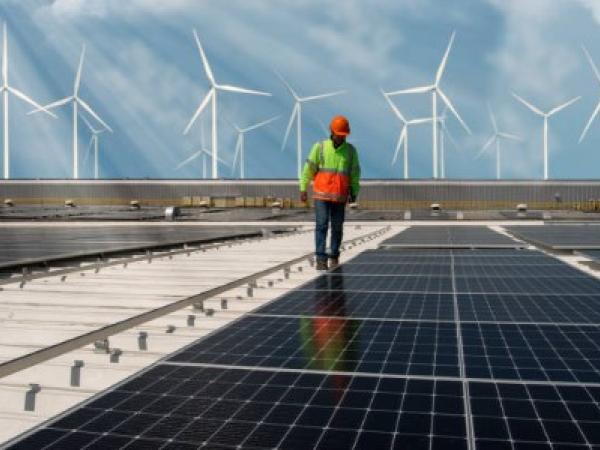Colombia is the fourth country in the region with the largest renewable energy capacity and the third with the largest generation. This is shown in a document from the International Renewable Energy Agency (Irena). According to “Renewable energy highlights” As of 2022, the country has an installed capacity of 12,553 megawatts (MW) as of 2021, ranking below Brazil, Venezuela and Chile, which are the countries with the highest capacity.
(With the project and auction, the ‘offshore’ wind farms begin).
In terms of total generation, the country climbs one position, according to the study, and ranks third, after Brazil and Venezuela, given that last year it was 51,905 gigawatt hours (GWh). Not only that, when reviewing the percentage of the generation that is made with these sources, the result is that the matrix is 65% from these sources.
Natalia Gutiérrez, president of Acolgen, explained that for several decades the country has had a mostly renewable electricity generation matrix, thanks to the hydraulics that provide a relevant part of this total.
Additionally, the government has promoted a series of initiatives to increase the participation of non-conventional renewable energies in the generation share.
For example, through auctions that assigned more than 2,000 MW of these technologies. This, added to other projects, would mean that by 2027 the country would be adding close to an additional 65% of its current capacity in this type of sources to its parent company. According to data from the Energy Mining Planning Unit (Upme), in five years 15,730 MW of solar and wind energy would enter.
(Colombia stands out for incorporating renewable energy plants).
Now, these projects face a challenge related to transmission lines. Germán Corredor, president of SER Colombia, stated that when these lines enter, an important part of the renewable energy generated in La Guajira will enter the system.“With a cutoff of 2026, we can finish between 15% and 20%, because an important part of the projects awarded through auctions fall within this period”, said.
These technologies have the difficulty of reliability. Corredor says that the variety of these sources contribute to making the system reliable. Gutierrez said that “We see a reliability scheme between solar and wind generation compared to hydroelectric and thermal.”

Non-Conventional Renewable Energy Sources (FNCER). (Reference image).
istock
Projects that are in a queue
The country has a series of projects that are lining up to start operating. The most important in terms of generation is Hidroituango, which according to EPM would put the first two turbines into operation in October. Going forward, the project would begin commissioning each unit. In addition, there are a series of solar and wind generation initiatives in La Guajira that will enter the next few years.These require another very relevant infrastructure: the Colectora transmission line that would enter in 2025.
DANIELA MORALES SOLER
Dansol@eltiempo.com
















